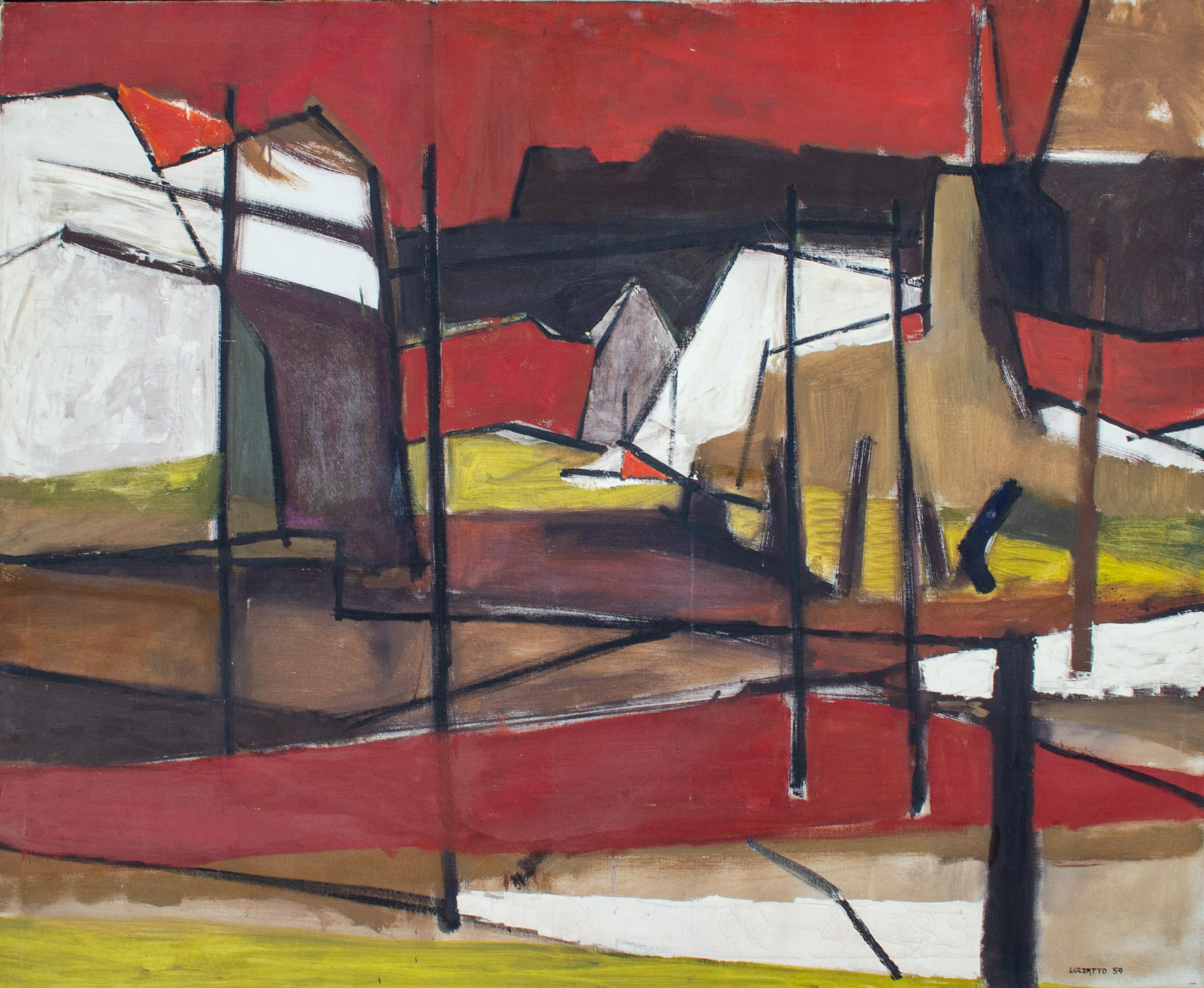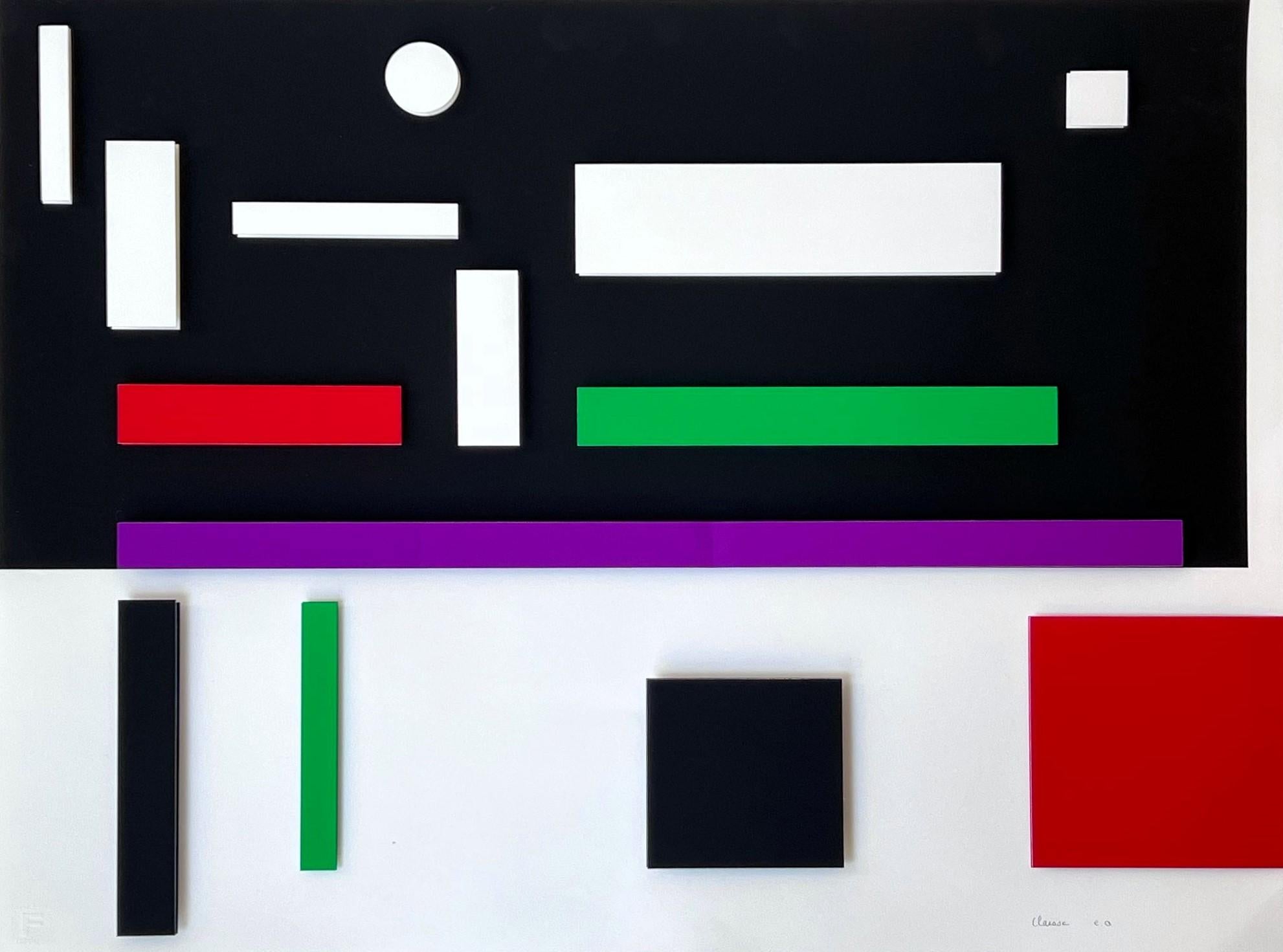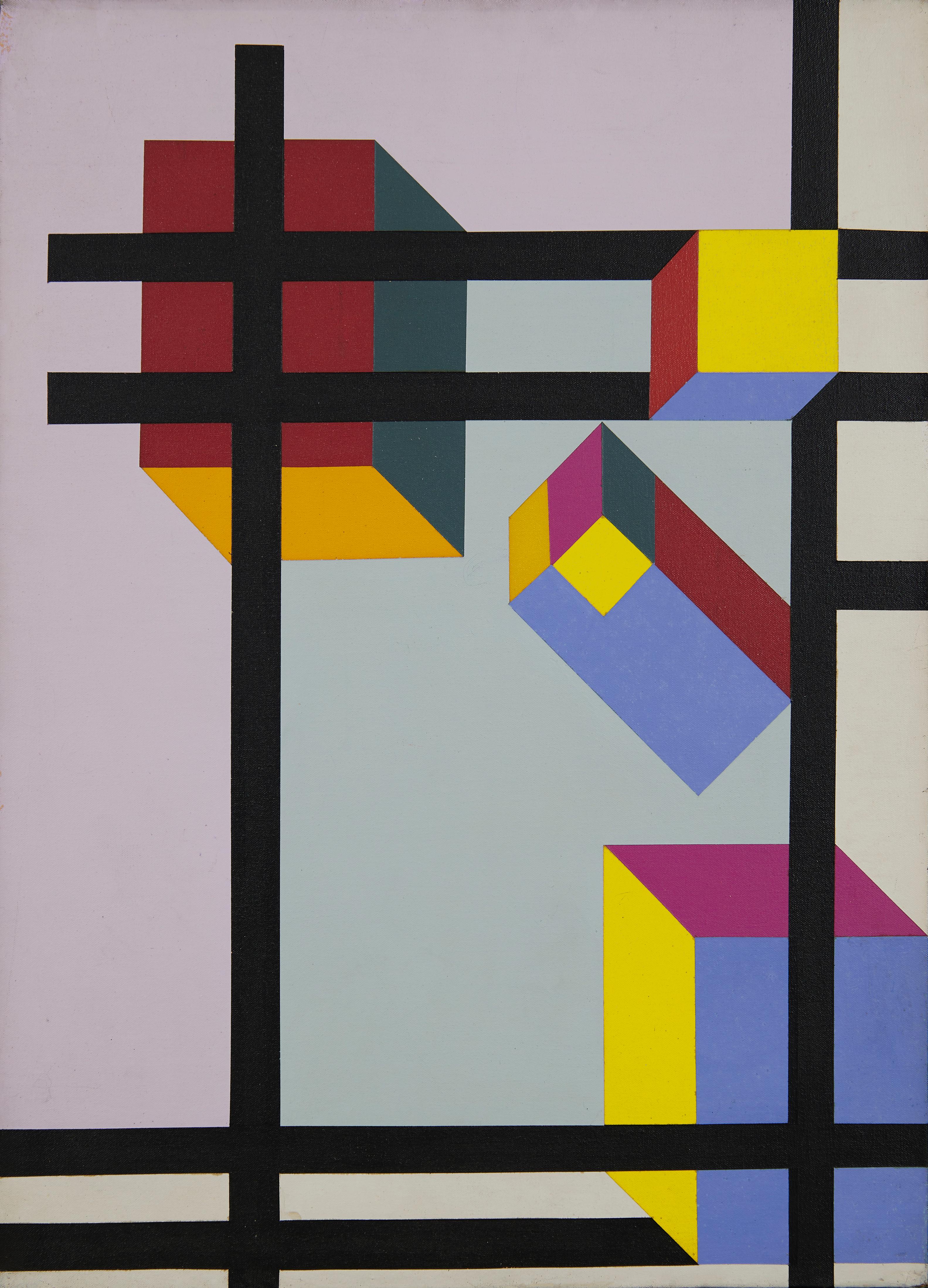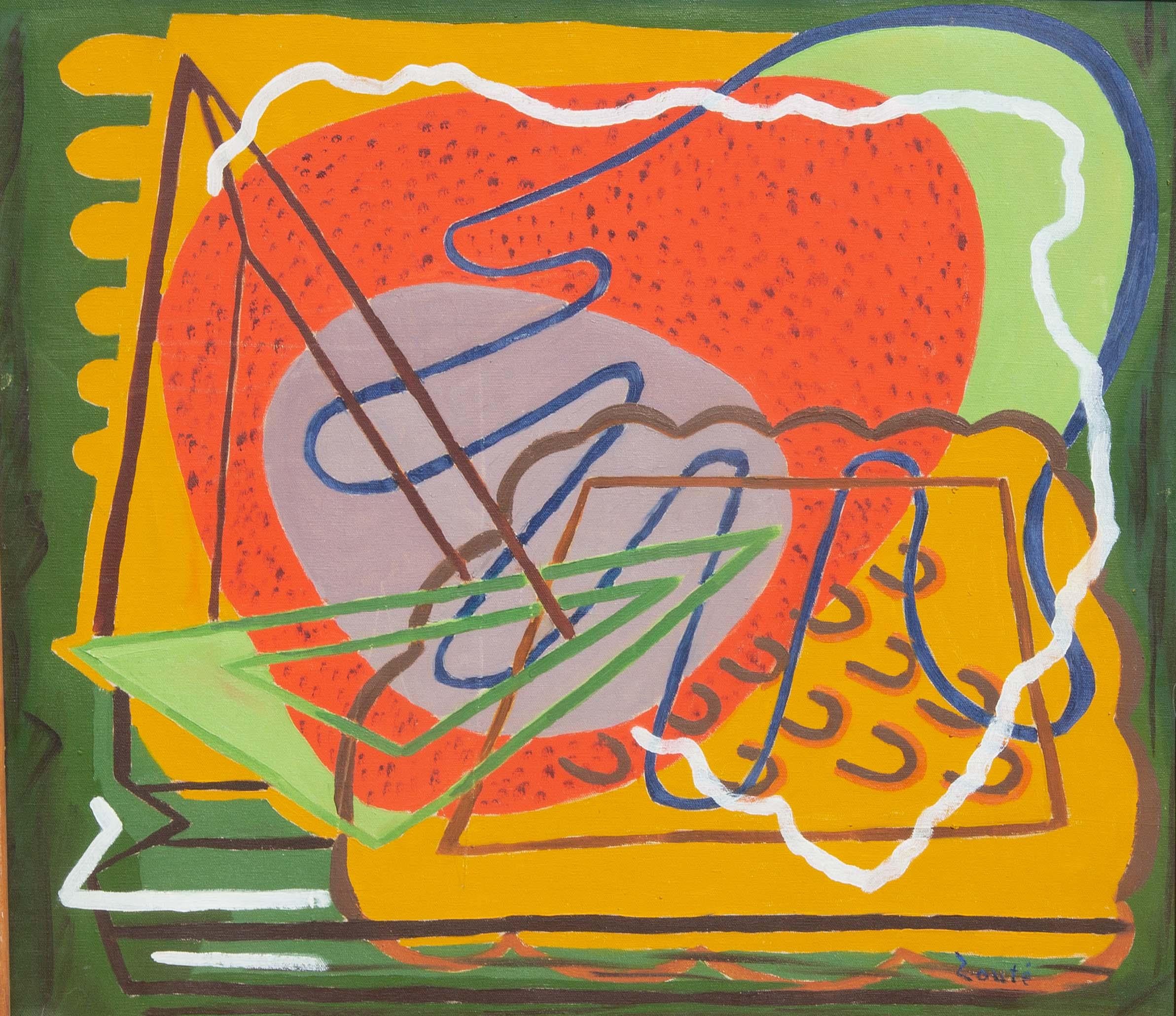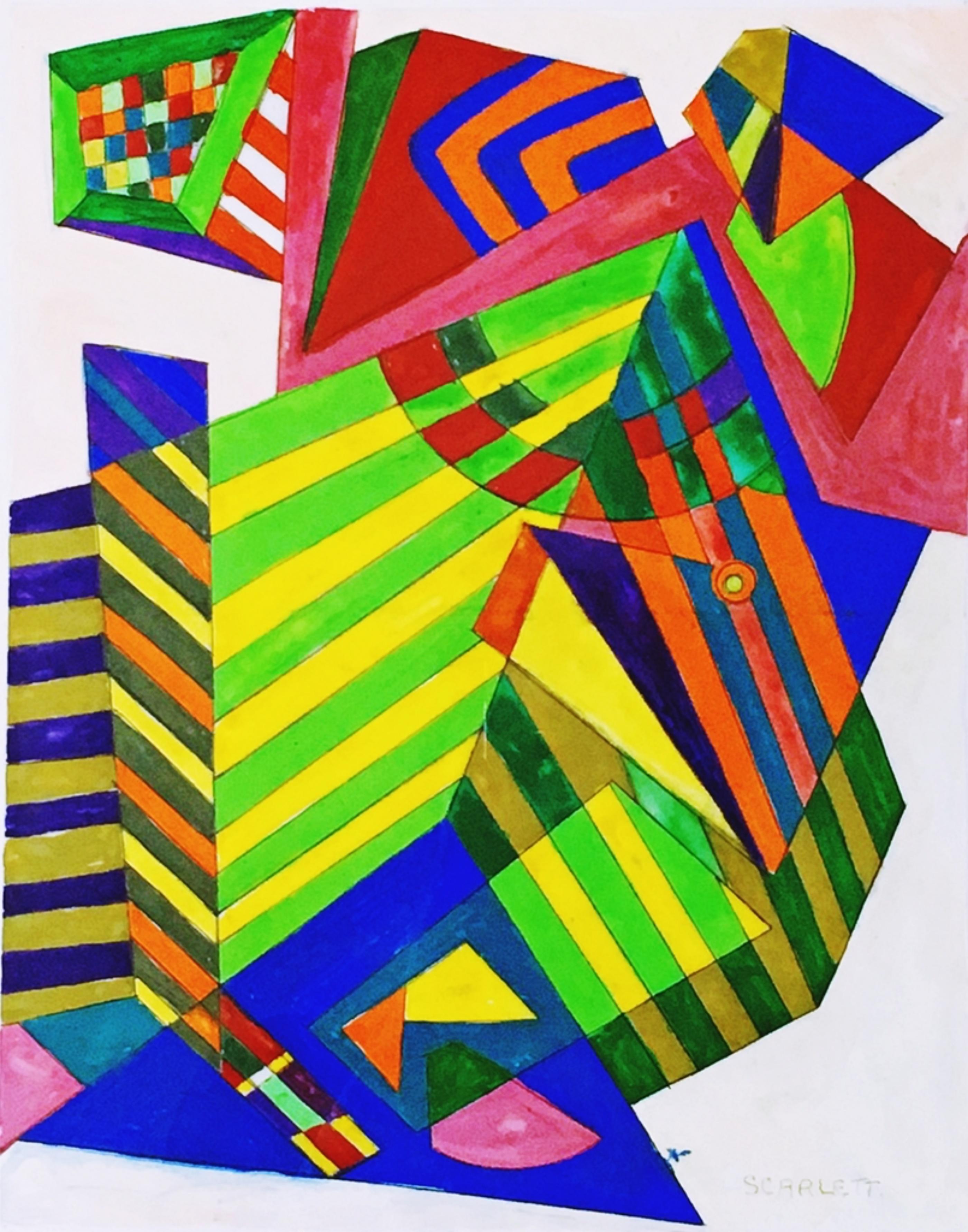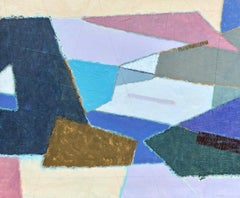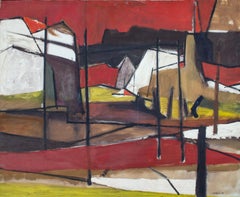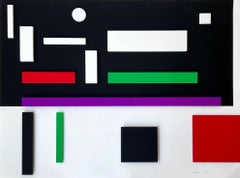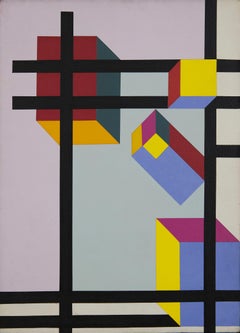Items Similar to "Composition" Balcomb Greene, Geometric Abstract, Early Modernist Composition
Want more images or videos?
Request additional images or videos from the seller
1 of 8
Balcomb Greene"Composition" Balcomb Greene, Geometric Abstract, Early Modernist Composition1936
1936
$45,000
£34,322.87
€39,085.46
CA$63,238.73
A$68,970.72
CHF 36,536.03
MX$826,860.96
NOK 465,306.66
SEK 425,488.41
DKK 292,006.62
About the Item
Balcomb Greene
Composition, 1936
Signed Balcomb Greene on verso upper stretcher bar
Signed on backing board: Balcomb Greene
Oil on canvas
30 1/4 x 46 inches
Provenance:
The artist
A.C.A Galleries, Inc, New York
Private Collection, New York
Estate of the above, 2024
Exhibitions:
New York, Zabriskie Gallery, American Geometric Abstraction Of the 1930s, June 1 - July 14, 1972; this exhibition traveled to University at North Carolina at Greensboro, The Weatherspoon Art Gallery, September 9 - October 1, 1972;
Dallas Museum of Art, October 8 - November 19, 1972.
Literature:
Robert Beverly Hale, The Art of Balcomb Greene, New York, 1977, p. 28, illustrated.
Balcomb Greene began his art career only after he married Gertrude Glass in 1926. He had studied philosophy and psychology as a student at Syracuse University, and spent a year doing graduate work in psychology in Vienna. In 1927, the Greenes returned to New York, where Balcomb pursued advanced study in English literature. For the following three years, Greene taught English at Dartmouth College and wrote fiction. After the couple went to Paris for a year late in 1931, Greene began to experiment with painting. He worked independently at the Académie de la Grande Chaumière, but beyond this brief exposure to art school, he taught himself by frequenting the cafés of Paris and by looking at the new art to be seen in the French capital. He was fascinated with both Picasso and Matisse, but Juan Gris, Piet Mondrian, and the members of the Abstraction-Création group exercised special influence on Greene's development of a personal, artistic style.
In Paris, Greene quickly developed an acute analytical sense for modernism. After he and his wife settled in New York early in 1933, Greene published articles on art in Art Front, the magazine of the Artists' Union, as well as in several other publications. With his wife, he was active in several artists' organizations; in 1935 and 1936 he served as editor of Art Front, and he became the first chairman of the American Abstract Artists, a post to which he was twice reelected. In addition, Greene helped draft the group's charter, served on the editorial committee for the 1938 yearbook, and designed the cover for the first publication.
Until the WPA was formed in 1935, Greene made a precarious living writing for two sensationalist newspapers, Broadway Brevities and Graft. After joining the WPA, he painted abstract murals for the Hall of Medicine at the 1939 New York World's Fair and for the Williamsburg Housing Project, and he designed a stained-glass window for a school in the Bronx. About 1940, Greene began working on a master's degree in art history at New York University. In 1942, he accepted a post at Carnegie Institute of Technology in Pittsburgh, where he taught art history until 1959. The Pittsburgh move did not mean cutting New York ties for the Greenes. The couple commuted between the two cities, and in 1947 purchased land atMontauk Point, Long Island, where they spent as much time as possible.
It was not until the 1950s that Greene began to exhibit with any frequency. He had shown his earliest paintings—admixtures of realism, fantasy, and incongruous stylistic elements— in Paris in 1932. His work was featured at J.B. Neumann's New Art Circle in 1947, and in 1950, Greene began exhibiting at the Bertha Schaefer Gallery in New York. By this time his painting had undergone a fairly dramatic stylistic shift. During the 1930s, Greene worked with angular, geometric planes, intersecting and overlaying color to create distinctive spatial configurations. Completely nonobjective, his forms often functioned as objects in space, their perspectives controlled through the juxtaposition of diagonal and rectilinear structure. Greene often worked out compositions by making small paper collages, such as the Untitled works identified as "34–8", "35–4", "35–7", and "39–03". Intended as preparatory studies, these collages represented a thinking-through process and lack the surface finish that characterized his oils.
Around 1943, Greene again began using the human figure in his work. Although not conscious of Surrealist influences, Greene's odd merging of geometric space with organically abstracted human figures—evident, for example, in Way Down Blue of 1945— represents a distinctly Surrealist impression. By the late 1940s, Greene began a clear transition to the figurative style for which he is now well known. Light entered his work as an abstract compositional device, as did a desire to reflect fundamental humanist concerns. Beyond his involvement in artists' groups and his own paintings, Greene contributed significantly to the modernist cause through his eloquent and perceptive essays. He believed that the artist had a special gift for speaking directly to the individual:
It is actually the artist, and only he, who is equipped for approaching the individual directly. The abstract artist can approach man through the most immediate of aesthetic experiences, touching below consciousness and the veneer of attitudes, contacting the whole ego rather than the ego on the defensive."
- Creator:Balcomb Greene (1904-1990, American)
- Creation Year:1936
- Dimensions:Height: 30.25 in (76.84 cm)Width: 46 in (116.84 cm)
- More Editions & Sizes:Unique workPrice: $45,000
- Medium:
- Movement & Style:
- Period:
- Condition:
- Gallery Location:New York, NY
- Reference Number:1stDibs: LU1841214665862
Balcomb Greene
Balcomb Greene has been described as "an iconoclast, a painter who has refused to conform to the latest artistic trends." This comment was apt, for Greene was an independent-minded artist who followed his own aesthetic inclinations regardless of what was in vogue among critics and the public. At the outset of his career, he eschewed Depression-era realism in favor of a cutting-edge geometric abstract style that set him apart from the mainstream art establishment and from many of his fellow abstractionists. During the 1940s, when non-representational painting came into fashion, he began to incorporate the human form into his work, creating enigmatic figure paintings in which variations of light and shadow played a vital role in creating mood. A turning point in his career occurred in 1931, when Greene and his wife, Gertrude Glass Greene, traveled to Paris to further their understanding of vanguard art and literature. Although Greene intended to write novels in his Montparnasse studio, he soon found himself drawn to the art world and decided to become a painter. He was especially inspired by the example of Piet Mondrian, Juan Gris and the Abstraction-Creation painters, who sought to eliminate all references to nature, literature and anecdote by focusing on pure abstraction. Greene returned to the United States in 1932, going on to develop his own hard-edged abstract style, creating what he referred to as "straight line, flat paintings." In 1937, he became a founding member and first chairman of Abstract American Artists, established to promote the cause of abstraction in national art circles. In the 1930s, Greene found employment with the Works Progress Administration's Federal Art Project. He created an abstract mural for the Federal Hall of Medicine at the World's Fair of 1939. In 1940, Greene began studying art history at New York University, going on to receive a master's degree in 1943. During this period, his aesthetic approach changed as he abandoned the crisply rendered and brightly colored forms of his geometric work in favor of the figure shown against a backdrop of fragmented planes. He went on to create paintings, often naturalistic depictions of the female nude, that were characterized by an expressionist handling of paint and a limited palette of whites, greys and other muted tones that derived from his interest in photography. In 1947 Greene purchased some land on Montauk Point, Long Island. With the exception of a trip to Paris in 1958-60, he spent most of his time on Long Island, where he was one of the pioneers of the East End art colony. Inspired by the proximity of the ocean, he painted a number of marines, using dynamic brushwork to evoke the energy and spirit of the sea. Greene taught aesthetics and art history at the Carnegie Institute of Technology in Pittsburgh (1942-47), where his students included Andy Warhol and Philip Pearlstein.
About the Seller
5.0
Platinum Seller
Premium sellers with a 4.7+ rating and 24-hour response times
Established in 2022
1stDibs seller since 2022
132 sales on 1stDibs
Typical response time: <1 hour
- ShippingRetrieving quote...Shipping from: New York, NY
- Return Policy
More From This Seller
View All"Ouverture, with Cypress Forms" Stephen Edlich, Abstract Geometric Painting
By Stephen Edlich
Located in New York, NY
Stephen Edlich
Ouverture, with Cypress Forms, 1982
Signed, dated and titled on the stretcher
Acrylic paint, mixed media, and burlap on canvas
60 x 40 inches
An artist who worked in the post-cubist and constructivist traditions, Stephen P. Edlich gained a considerable amount of acclaim in the 1970s and 1980s for his collages, sculpture, and paintings. His promising career was cut short due to his untimely death at age 45 in 1989.
Edlich was born in New York City. He received his undergraduate degree with a major in fine arts studies from New York University in 1967. During his college years, he traveled to London, where he met the art dealer Victor Waddington and created his first white on white collage. In that same year, he attended a major exhibition of the work of Ben Nicholson, which would be influential source in his art. Edlich returned to England in 1967, where he met Barbara Hepworth and Patrick Heron in London and traveled to St. Ives, Cornwall, long a favorite artists' haunt. Edlich began creating acrylic reliefs...
Category
1980s Abstract Geometric Abstract Paintings
Materials
Canvas, Burlap, Mixed Media, Acrylic
$60,000 Sale Price
20% Off
"Untitled" Albert Heckman, Mid-Century American Modernist Abstract Composition
By Albert Heckman
Located in New York, NY
Albert Heckman
Untitled
Signed lower left
Oil on canvas
20 x 24 inches
Albert Heckman was born in Meadville, Western Pennsylvania, 1893. He went to New York City to try his hand at...
Category
1950s Modern Abstract Paintings
Materials
Canvas, Oil
"Abstract Interior of Room" Myron Lechay, Colorful Early Geometric Abstract
By Myron Lechay
Located in New York, NY
Myron Lechay
Abstract Interior of Room, 1923
Signed upper right corner and dated upper left corner
Oil on canvas
24 x 20 inches
Provenance:
Estate of the artist
Spanierman Gallery, ...
Category
1920s Abstract Abstract Paintings
Materials
Canvas, Oil
"Untitled" James Suzuki, Abstract Color Field Composition, Mid-Century
By James Suzuki
Located in New York, NY
James Suzuki
Untitled, circa 1960
Signed lower right "Suzuki"
Acrylic on canvas
66 1/4 x 80 inches
Provenance:
Private Collection, New Jersey
James Hiroshi Suzuki...
Category
1960s Color-Field Abstract Paintings
Materials
Canvas, Oil
"Untitled" Howard Daum, Abstract, Red White and Blue, Modernist Composition
Located in New York, NY
Howard Daum
Untitled, 1972
Signed and dated on verso
Oil on board
10 1/8 x 8 inches
Howard Daum was born in Poland. His family lived in Lodz until he turned 14, when he and his mother left the counrtry. They settled in Montreal, Canada, where Daum learned from the artist Alexander Bercovitch from 1934 to 1937. In 1938, Daum and his mom traveled to New York and chose the Bronx as their home.
After finishing high school in 1940, Daum received a scholarship to the Art Students League. There, he learned from teachers like Will Barnet, Cameron Booth, Morris Kantor, Harry Sternberg, and Vaclav Vytlacil, who was a key mentor. Vytlacil had studied under modern painter Hans Hofmann in Munich in 1921 and helped start the American Abstract Artists group in 1936.
In 1943 and 1944, Daum served in the U. S. Army in Mississippi before coming back to New York. During 1944 and 1945, he had lessons with Hofmann at his school in Greenwich Village. Daum's art during this time became more abstract, using bold and bright colors with clear brushstrokes. The space in his work was very shallow, with objects like figures and easels overlapping each other.
Some of Daum’s artist friends, such as Robert Barrell, Peter Busa, and Steve Wheeler...
Category
1970s Abstract Abstract Paintings
Materials
Oil, Board
"Twice Told Tale (3)" David Shapiro, Rare Oil on Canvas Symbolic Composition
By David Shapiro
Located in New York, NY
David Shapiro
Twice Told Tale (3), 11/1983
Signed and dated on verso
Oil on canvas
44 x 22 inches
David Shapiro was born in 1944 in Brooklyn, New York. His artwork, as described by...
Category
1980s Abstract Geometric Abstract Paintings
Materials
Canvas, Oil
You May Also Like
Large Modernist Geometric Abstract Painting
By Gregg Robinson
Located in Surfside, FL
Gregg Robinson, American (born 1948) "Cipher Bar 19" Oil on Canvasboard Panel. Artist signed, title and dated 1990 far right. Very minor rubbing to paint. Panel measures 15-1/4" H x 63-1/2" W, frame measures 24-1/4" H x 72-1/4" W
GREGG ROBINSON
The universe of visual art encompasses a huge spectrum of motivation and means of expression. Examples range from the most syrupy sentimentality to extremes of moral and intellectual confrontation. For me, the creative process is, on the simplest level, an aesthetic puzzle. Elements of the puzzle include contrast, color, visual texture, graphic pattern, and in some recent work, a simple cryptic symbolism.
I have never been particularly interested in lyric or pictorial content, and though some of my work does contain undeniable spatial illusion, even that tends to be a by-product rather than a goal of the primary pursuit: the balance of light and dark, pure color and organic neutrals, energy and calm, strong pattern and subtle field. Having grown up in an environment of contemporary architecture, I have always valued the classic modern synthesis of form and function exemplified by the Bauhaus movement of the early 20th century. Hence, the simplest solutions are often the most satisfying. Obviously, the modernist ideal of efficiency in form and function requires that method of execution be as well adapted to the aesthetic goal as the visual language itself.
The media before you is the result of many years of experimentation that came to its current form in early 1992. I work with dry pigment over a plaster surface. My tools are broad knives, sponges, rags and masking. The finish is a high gloss alkyd resin.
CORPORATE COLLECTIONS:
Allstate Insurance
NBC Productions
Alaska...
Category
1990s Contemporary Abstract Paintings
Materials
Canvas, Mixed Media, Oil, Board
1959 Geometric Abstraction by Francis Almeida Luzzatto
Located in New York, NY
Francis Almeida Luzzatto (American, 1935-1999)
Untitled, 1959
Oil on canvas
40 x 48 1/2 in.
Signed and dated lower right: Luzzatto 59
Partial label verso: The Art Rental Gallery, Wa...
Category
1950s Abstract Geometric Abstract Paintings
Materials
Canvas, Oil
Geometric composition
By Geneviève Claisse
Located in Paris, FR
Silkscreen and relief collage
Handsigned by the artist in pencil and annotated EA
Edition : 30 ex.
61.00 cm. x 78.00 cm. 24.02 in. x 30.71 in. (paper)
61.00 cm. x 78.00 cm. 24.02 i...
Category
1980s Abstract Abstract Prints
Materials
Silk
Composite #6, Abstract Geometric Shapes, Mid-20th Century
Located in Beachwood, OH
Charles Fodor (American, 20th Century)
Composite #6, 1969
Oil on canvas
Signed, dated and titled verso
27.5 x 20 inches
29 x 21.5 inches, framed
Category
1960s Abstract Geometric Abstract Paintings
Materials
Oil
Abstract Composition by Zoute (Leon Salter) Mid Century
Located in Rochester, NY
Abstract Modernist oil painting by Zoute. Oil on canvas mounted on board. Painted in circa 1940's.
Zoute (Born-Leon Salter, 1903-1976) was self-taught and well exhibited during his l...
Category
Mid-20th Century Abstract Abstract Paintings
Materials
Canvas, Oil
Untitled Mid-Century Modern Geometric Abstraction
By Rolph Scarlett
Located in New York, NY
Rolph Scarlett
Untitled Mid-Century Modern Geometric Abstraction, ca. 1950
Gouache on paper painting
Hand signed on lower right front
This is a stunning original, signed vintage 1950...
Category
Mid-20th Century Abstract Geometric Abstract Paintings
Materials
Gouache, Mixed Media, Pencil

